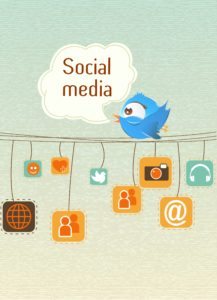Quick links, bringing you great articles on writing from all over the web.
Bookbub is one of the bigger options out there for book marketing. at Self Publishing Advice Center shares her tips on how to utilize Bookbub and the advantages and disadvantages that they offer. For an alternative approach you can also try BookGorilla and Kindle Nation Daily. Full disclosure, I do work for both of those sites but have no reservations recommending them.
~ * ~
How to Use BookBub to Boost Sales of Self-Published Books
 By Jane Davis on June 11, 2016
By Jane Davis on June 11, 2016
Award-winning English author Jane Davis shares her successful case study of using book promotion service BookBub to market her literary novels.
Why BookBub?
Jane Davis used BookBub to boost the sales of her novel with the fewest recent sales
There’s little doubt about it, BookBub is the Holy Grail of ebook advertising. I have heard them talk about their huge successes in promoting romantic fiction and sci-fi, but I write literary fiction. Would it work for me?
With BookBub, you don’t simply hand over your cash. You apply for an advertising slot and wait to hear (a) whether your application is accepted and (b) when it will run. They had turned me down twice in the past, but I hadn’t been prepared to give my work away before. My sales figures had never been so low at the beginning of 2016. I knew I had to break the pattern.
Given the date 13 March, I chose to promote A Funeral for an Owl. With only four purchases in the quarter leading up to February 2016, it was my worst performing book. At the same time, I hold great affection for its characters and the story – despite the fact that it lost me a publishing deal!
What does a BookBub ad cost?
Two factors influence the price of a coveted BookBub slot. One is genre. The other is price (either 99p/99c or free). My BookBub ad for UK, US and Canada cost £215 (Literary, free). BookBub also offer advertising in India, but Amazon declined to price-match for that region.
~ * ~
If you liked this article, please share. If you have suggestions for further articles, articles you would like to submit, or just general comments, please contact me at paula@publetariat.com or leave a message below.




 Of all the social networks you can use to help promote your book, Facebook might have the most potential for a few reasons.
Of all the social networks you can use to help promote your book, Facebook might have the most potential for a few reasons.





 Twitter has hundreds of millions of daily users worldwide. It is both a way to engage one to one with people and a way to broadcast information. Writers use it every day for both. Search for #amwriting on Twitter and you will see some of the activity writers are engaging in on Twitter. Some of it is broadcasting. Some of it is looking for engagement.
Twitter has hundreds of millions of daily users worldwide. It is both a way to engage one to one with people and a way to broadcast information. Writers use it every day for both. Search for #amwriting on Twitter and you will see some of the activity writers are engaging in on Twitter. Some of it is broadcasting. Some of it is looking for engagement.